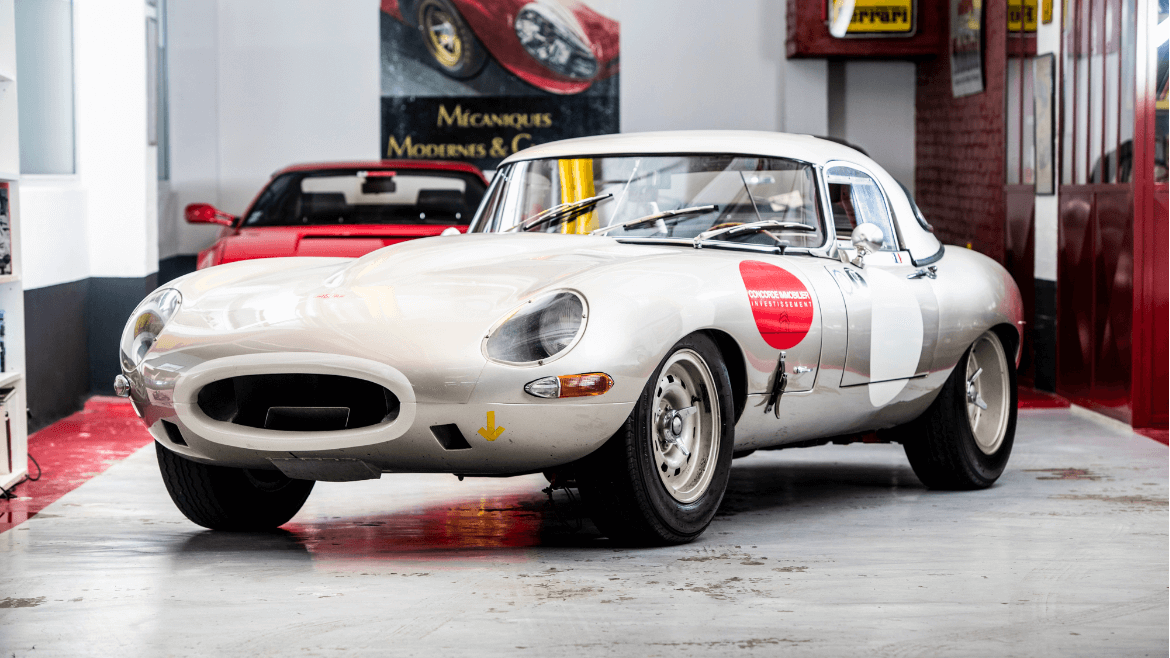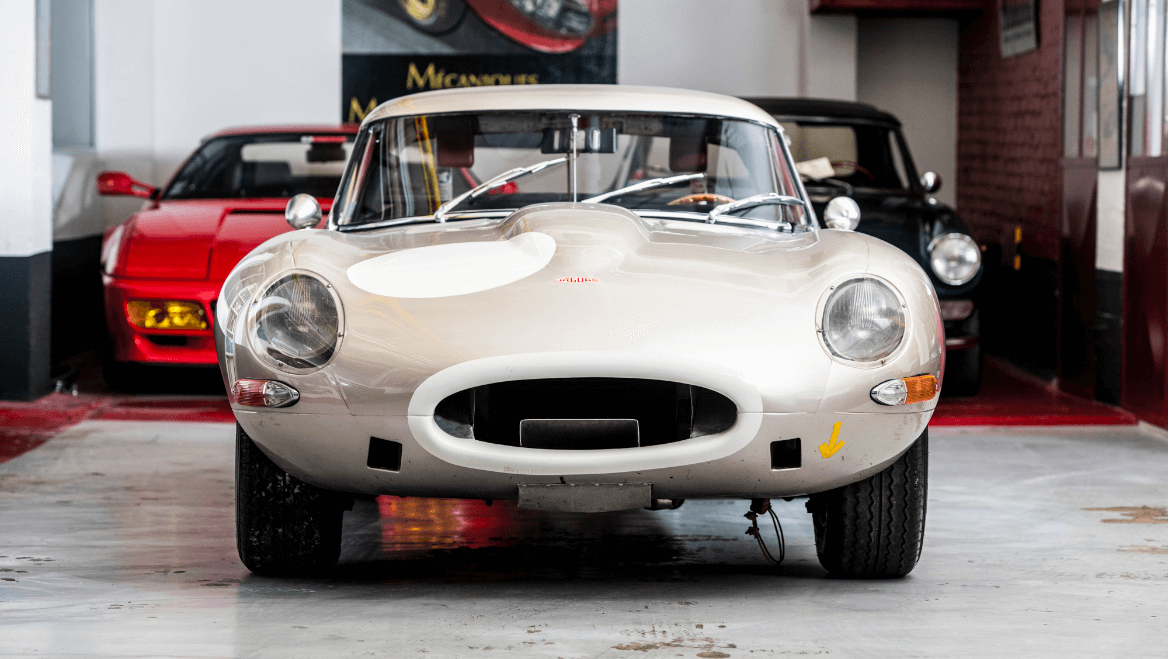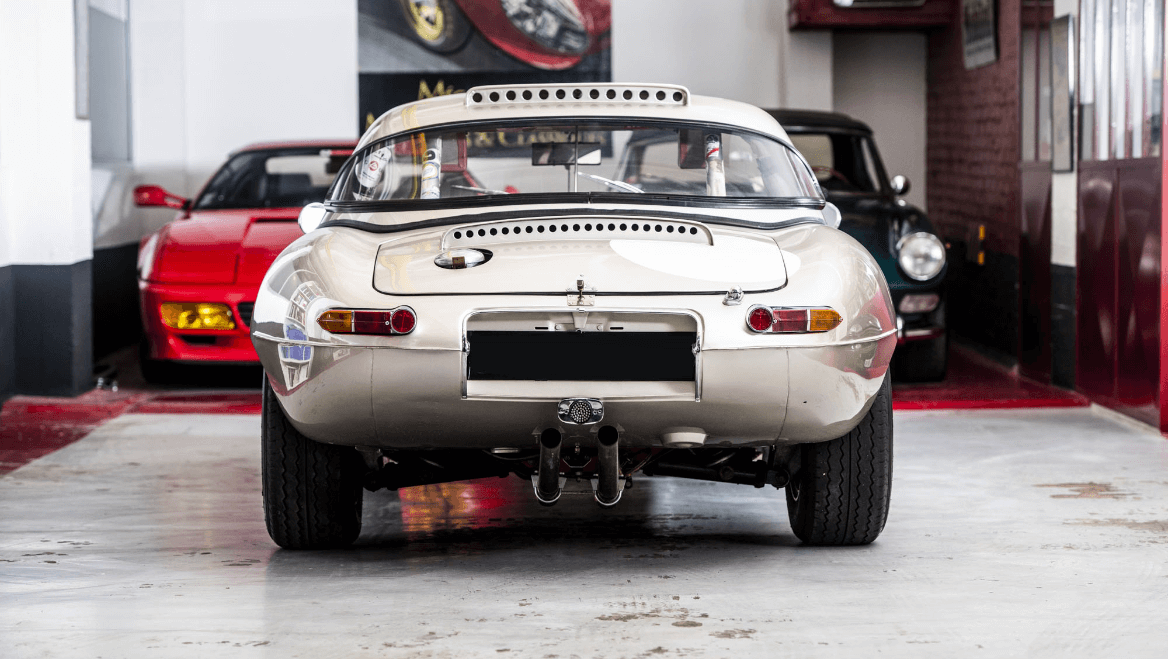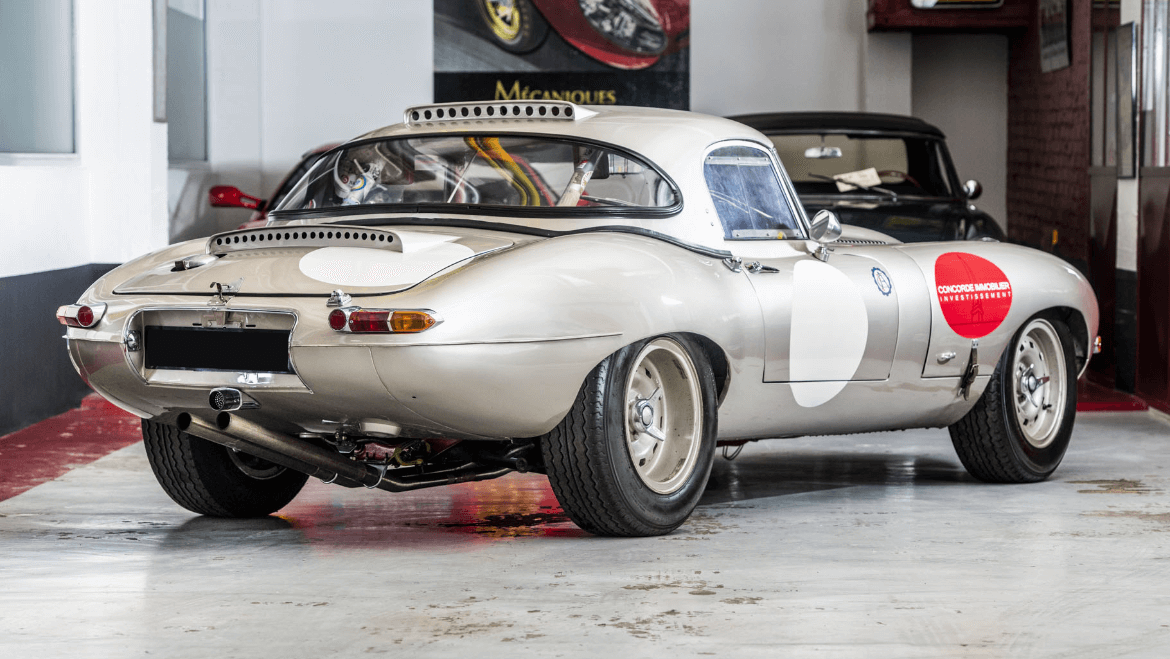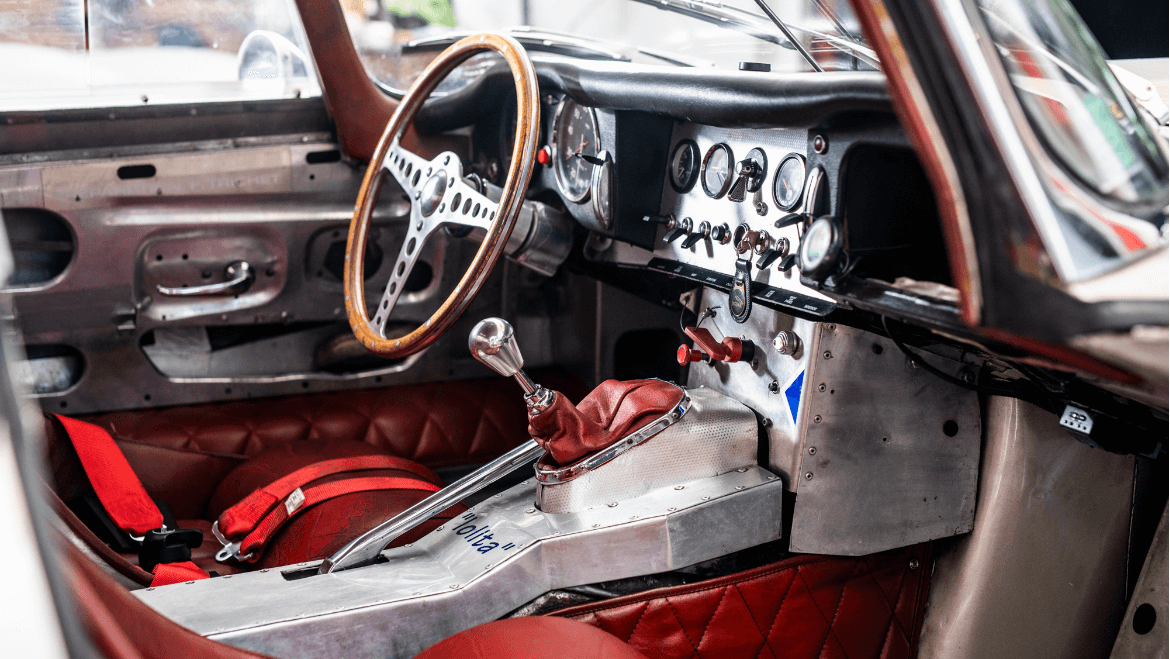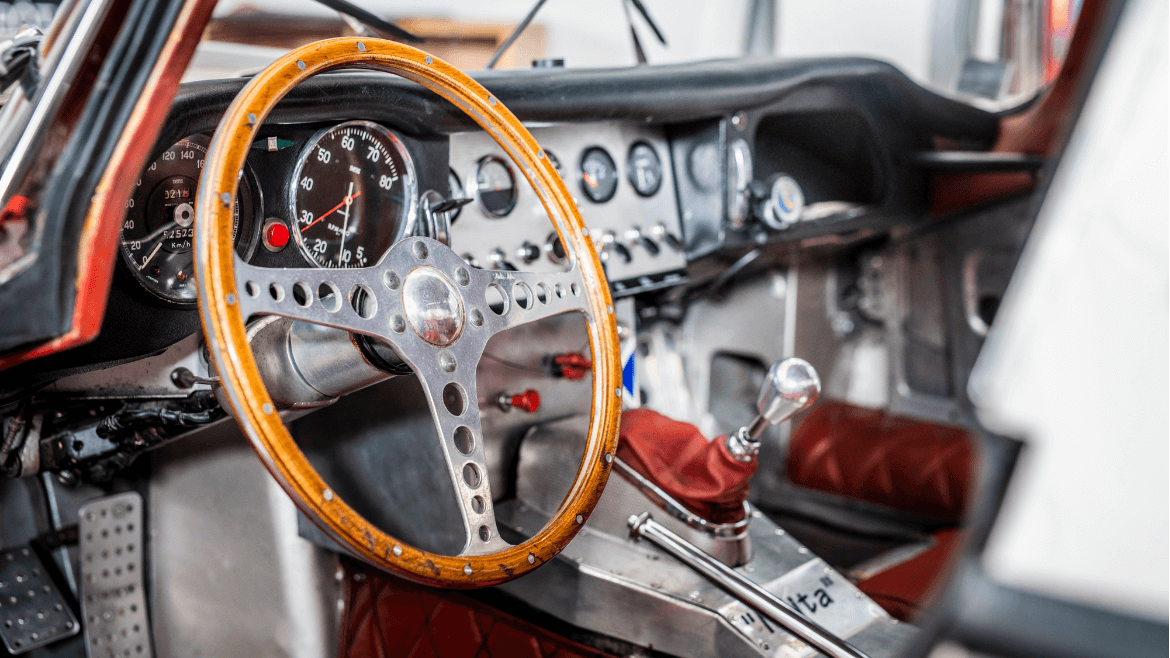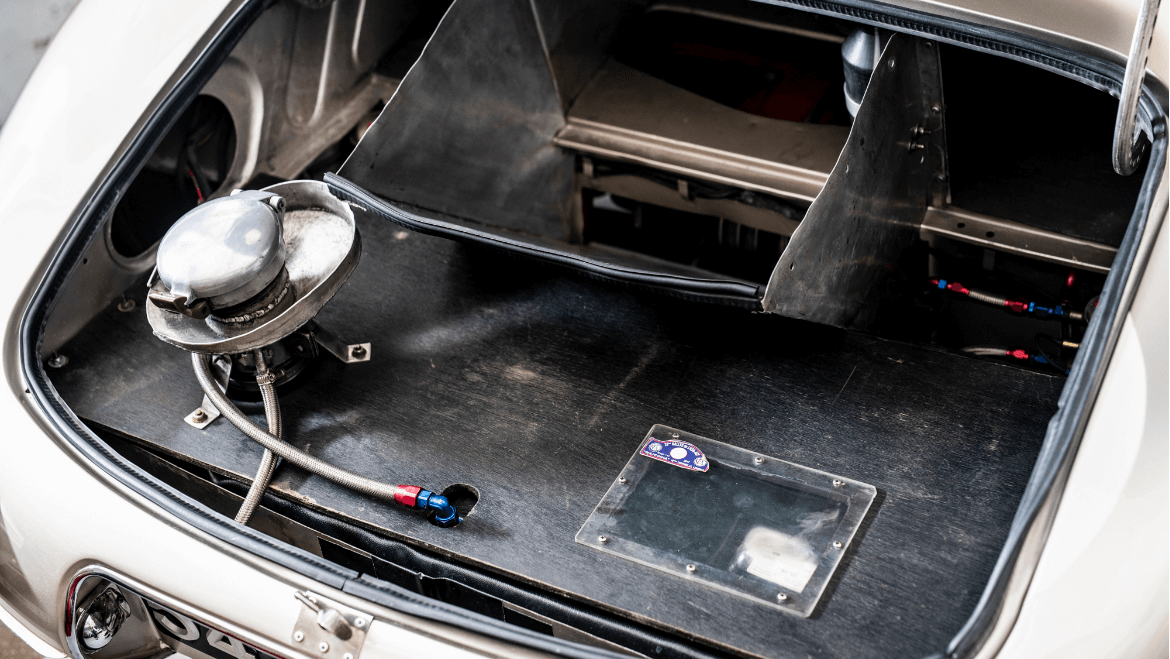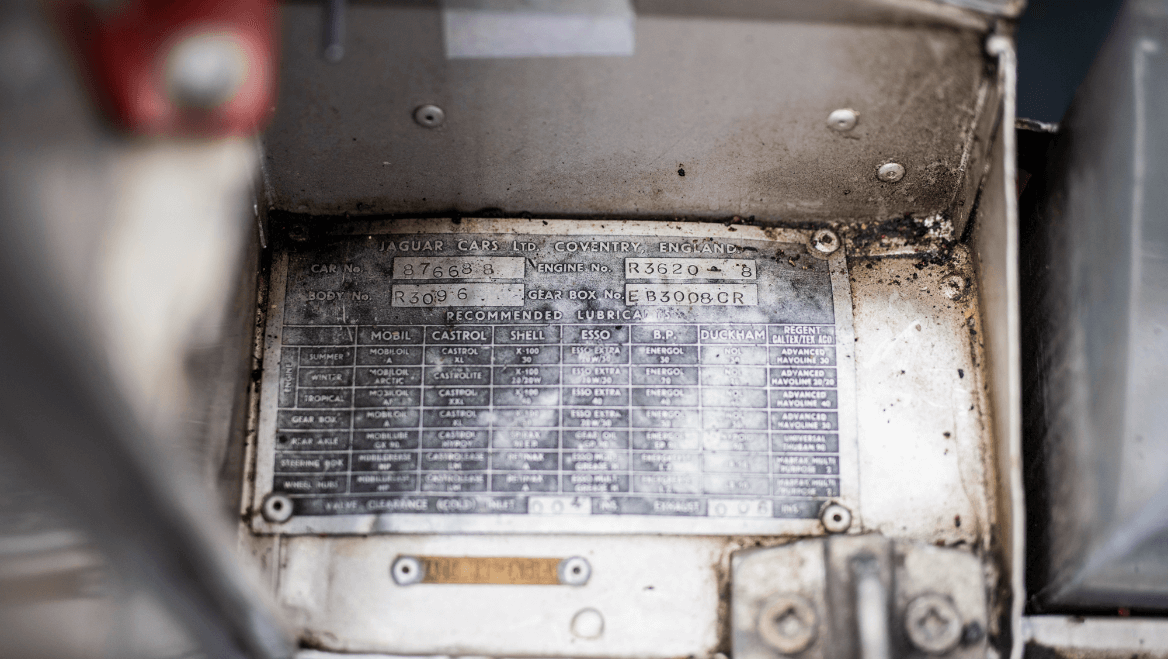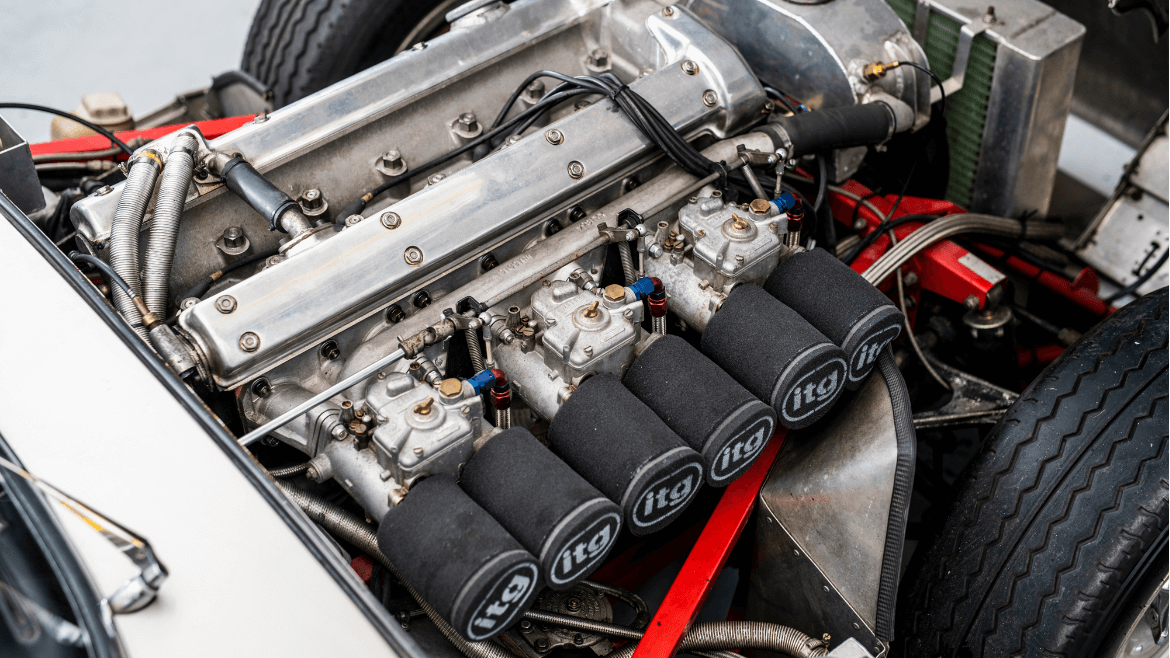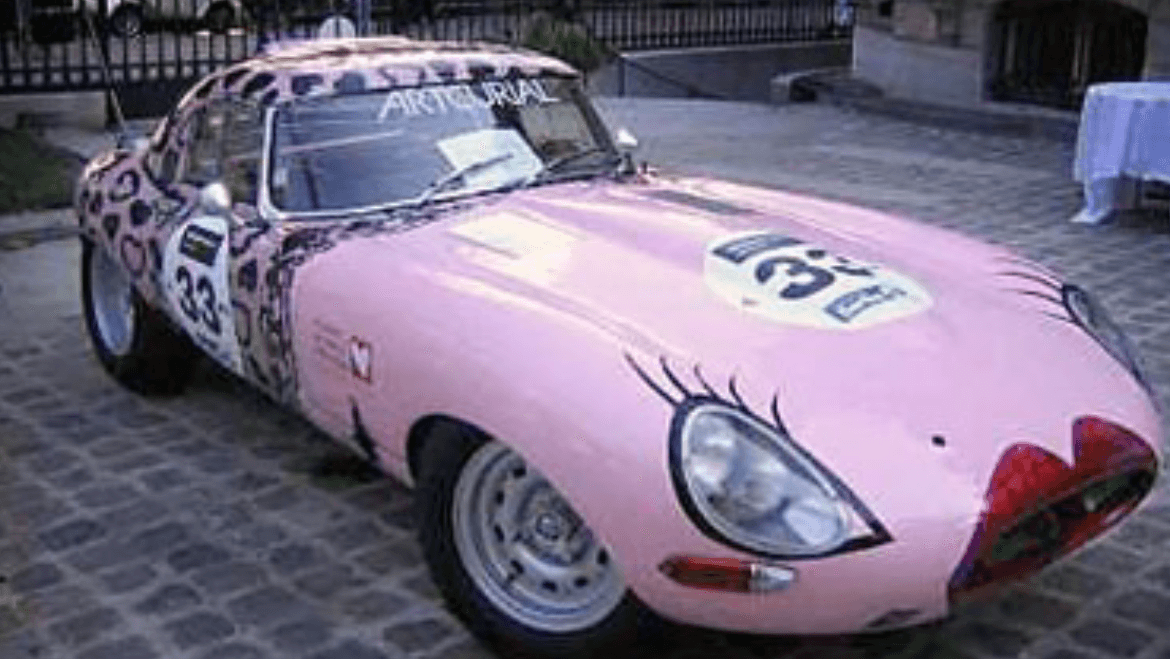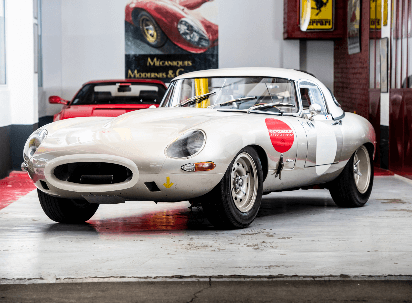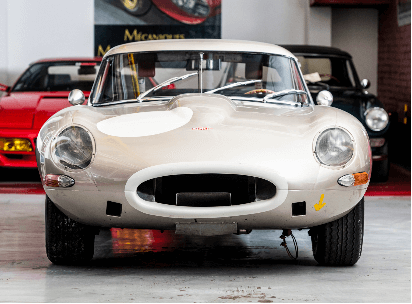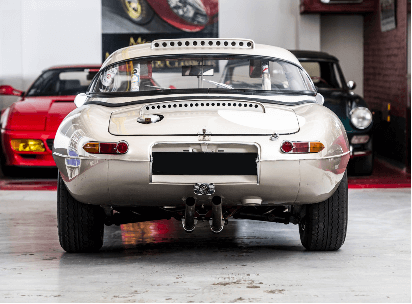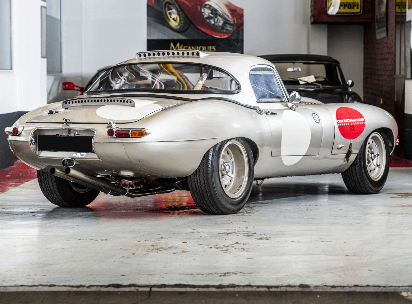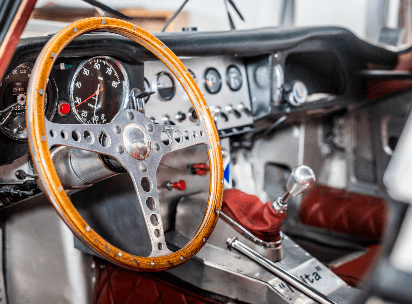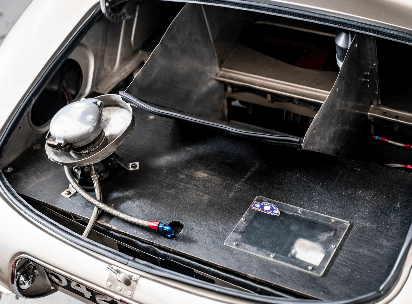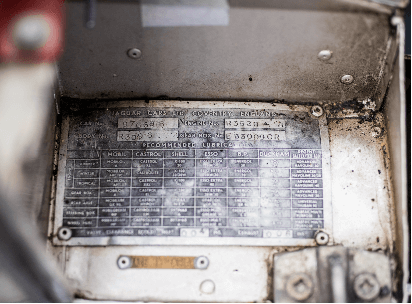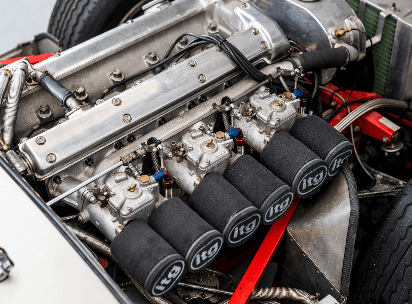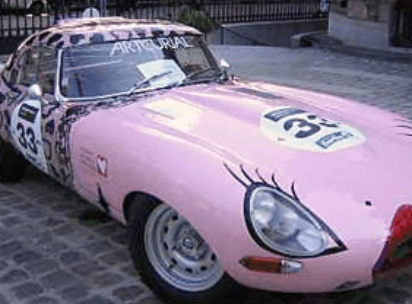Jaguar Type E 3,8 "semi-lightweight"
The famous E Type "Lolita" by Chantal Thomas
Year : 1962
Color : Silver
POA
FEATURES
Type E DHC 1962 Série 1 Plancher Plat . N° de série 87 66 88 . N° de Moteur R 3620-8 d'origine. N° De moteur actuel ZA 84968 .
COMMENTS
In 1961 the XK150 was replaced by the ‘E’-type, a car that was as revolutionary and striking as the original XK120. The Jaguar E-Type was first revealed in March 1961 at the Geneva Motor Show and took part in five Le Mans victories (in the Jaguar C-Type and D-Type racers).
In 1963, Jaguar's competition department supervised by Lofty England decided to produce eighteen aluminium body E-Type also called 'Lightweight'. Only twelve were made. They were intended as a racing follow-up to the D-Type, only sold to racing customers. Jaguar’s goal was to demonstrate the competitiveness of its new model without having to invest a "factory competition" budget.
Chief designer of Jaguar, Claude Baily, instructed the factory to proceed with the build of seven right hand drive competition cars for which he listed specific modifications to the basic E-Type (name project no. ZP 537/24). The first of these cars, were delivered to John Coombs’, Dick Protheroe and Tommy Sopwith racing teams…
The renowned Graham Hill, Roy Salvatori and Jack Sears achieved promising results, Jaguar flew from victory to victory in GT. Coombs' famous 4WPD E-Type was modified with a lighter-gauge steel body, this prototype objective was to beat Ferrari’s new arrival, 250 GTO!
In July 1964, Jaguar factory delivered a lightweight steel coupe spec to the Frenchman Pierre Bardinon; its doors were aluminium like its hood, which is easily recognisable with it’s very unique square vents (they result from the use of heating ventilation to stiffen the "aluminium skin").
This car is considered by historians as the 13th lightweight competition-spec E-Types that Jaguar made.
Chassis 876688 delivered to Capina France in March 1962. It was produced in February 1962 but registered in June 1962, colour "gun metal" interior "biscuit", left hand drive. It is therefore a rare Series 1 "flat floor".
The vehicle was found by Richard Lyons Gletton in Montpellier in 1988 at Mr. Solignac garage with its original cylinder head, with a large number of special factory competition parts: wider track, Type D brake discs, Type D exhaust and an aluminium bonnet identical to Pierre Bardinons’ car.
The latter identified by François Mazet strengthens the thesis that the Roadster 64 former Mazet is the "donor" our Type E 3.8L, special parts found at the time.
Also, if François Mazet could engage in his racing roadster 4.2L in the 60s, from the mid-70s, the rules of engagement VHC (Competition of Historical Vehicles) prohibit the 4.2L of running. This is the most plausible explanation for this "metamorphosis".
It is Richard Gletton who bought the car in its original condition and entrusted Francis Trichet to restore and complete the preparation in full compliance with the FIA rules and the "continuation" of the former Mazet.
After the car was restored, it competed in 1990-1991-1992 in the French VHC championship with Gletton Richard then Alain Slessinger who sells it to Jean-François Bentz in 1993.
Since 1993, the car participated in a hundred races winning twenty podiums, with only fourteen withdrawals. The car has raced all over Europe then changed hands to the current owner who participated in the Jaguar support race of Le Mans Classic 2018.
In France: Montlhéry, Dijon, Paul Ricard, Nogaro, Magny-Cours, Le Vigeant, Pau, Lédenon, Albi, ... Charade and Le Mans (Bugatti Circuit 24 Hours) ... In UK: Silverstone, Donington, Oulton Park, Brands Hatch ... But also: Zandvoort (H), Spa (B), Nurburgring-F1 and Nordschleife (G), Brno (Czech Rep. Tcheq), Monza, Imola, Vallelunga (I), Jarama (E), Estoril, Portimao (P), Killarney (Cape Town)…
In addition, Jean-François Bentz did eight Tour Auto with the car (either with Francis Trichet or Hervé Poulain). Overall the car had a good pole position, with three dropouts and finished 3rd place at the 2010 Tour Auto (Bentz-Trichet).
In 2002 and in 2004, the car participated at Le Mans Classic with Bentz, Poulain and Trichet. It was the first Jaguar to finish and made headlines by appearing on the start line with a "dress" painted by the fashion lingerie designer Chantal Thomass as part of a charity event for the benefit of Cardiac Surgery, Children of the World. In 2005, the car was exhibited at Retromobile on Artcurial stand
The car was included in Hervé Poulain book "My Pop Cars" - it comprised also Alexander Calder, Andy Warhol, Frank Stella, Roy Lichtenstein, César, Arman art cars... Mr Poulain is an auctioneer and race driver who has participated eleven times at the 24 Hours of Le Mans.
During the 25 years of historical competitions, the car has been developed to the maximum the rules authorized by the FIA homologation form (reference lightweight competition 64, record No. 100)

